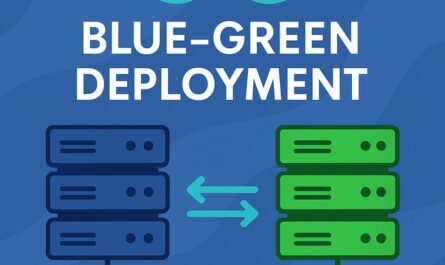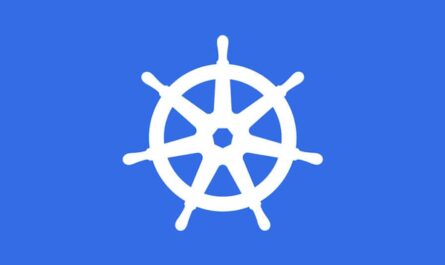Introduction In the world of modern software development and DevOps, deploying new features or updates without disrupting the user experience is crucial. One of the most effective strategies to achieve this is Canary Deployment. This technique enables developers and operations teams to deploy changes to a small subset of users before rolling out to the entire user base. In this blog, we’ll dive deep into what Canary Deployment is, why it’s important, how to implement it, and provide practical examples.
What is Canary Deployment? Canary Deployment is a release management strategy where a new version of an application is gradually rolled out to a small segment of users. If the new version performs well and does not introduce any issues, it is progressively rolled out to the remaining users. The name comes from the phrase “canary in a coal mine”—a technique where miners would bring a canary bird underground to detect toxic gases.
In software terms, the canary deployment acts as a test, ensuring the new software doesn’t cause unexpected issues.
Key Benefits of Canary Deployment
- Risk Mitigation: Rollouts are limited in scope initially, so any bugs or performance issues affect only a small group.
- User Feedback: Early users provide real-world feedback on the update.
- Automatic Rollbacks: If issues are detected, it’s easier to rollback to the previous stable version.
- Continuous Delivery Enablement: Canary deployment supports modern CI/CD pipelines and agile development.
How Does Canary Deployment Work?
- Prepare the New Version: Build and test the new version in a staging environment.
- Deploy to a Subset: Deploy it to a small group of users (canary group).
- Monitor Metrics: Closely monitor logs, performance metrics, and error rates.
- Gradual Rollout: If no critical issues are detected, expand the deployment incrementally.
- Full Rollout or Rollback: Based on monitoring results, either complete the rollout or revert to the previous version.
Canary Deployment Architecture Canary deployments can be implemented at various layers:
- Load Balancer Based: Load balancers distribute traffic between old and new versions.
- Service Mesh Based: Tools like Istio or Linkerd can route specific traffic to the canary version.
- Kubernetes Native: Kubernetes offers native support through deployments, labels, and selectors.
Example 1: Canary Deployment with Kubernetes Let’s say you have a web application running in Kubernetes.
apiVersion: apps/v1
kind: Deployment
metadata:
name: my-app-v1
spec:
replicas: 5
selector:
matchLabels:
app: my-app
version: v1
template:
metadata:
labels:
app: my-app
version: v1
spec:
containers:
- name: my-app
image: my-app:v1
Now, to deploy the canary version:
Learn about MLOPS. Click here
apiVersion: apps/v1
kind: Deployment
metadata:
name: my-app-v2
spec:
replicas: 1
selector:
matchLabels:
app: my-app
version: v2
template:
metadata:
labels:
app: my-app
version: v2
spec:
containers:
- name: my-app
image: my-app:v2
Use a service to direct a portion of the traffic to the canary version.
apiVersion: v1
kind: Service
metadata:
name: my-app-service
spec:
selector:
app: my-app
ports:
- protocol: TCP
port: 80
targetPort: 8080
Use a service mesh like Istio to split traffic:
apiVersion: networking.istio.io/v1alpha3
kind: VirtualService
metadata:
name: my-app
spec:
hosts:
- "my-app"
http:
- route:
- destination:
host: my-app
subset: v1
weight: 90
- destination:
host: my-app
subset: v2
weight: 10
Example 2: Canary Deployment with NGINX You can configure NGINX to route 10% of traffic to the new version:
upstream my_app {
server app-v1.example.com weight=90;
server app-v2.example.com weight=10;
}
server {
listen 80;
location / {
proxy_pass http://my_app;
}
}
Monitoring Canary Deployments Monitoring is essential for detecting issues early. Key tools include:
- Prometheus + Grafana: For real-time metrics.
- ELK Stack: Log monitoring.
- Jaeger: Distributed tracing.
- New Relic/DataDog: Application performance monitoring.
Metrics to watch:
- Error rates (4xx/5xx)
- Response times
- CPU/memory usage
- User complaints or bug reports
Follow me on Linkedin
Best Practices for Canary Deployments
- Automate Everything: Use CI/CD tools to automate builds, tests, and rollouts.
- Progressive Rollout: Increase traffic gradually from 5% → 10% → 25% → 50% → 100%.
- Define Rollback Conditions: Have clear thresholds for performance metrics.
- Use Feature Flags: Combine canary deployments with feature toggles.
- Test in Production (Safely): Canary deployment is a safe way to test in prod.
Tools Supporting Canary Deployments
- Kubernetes
- Istio/Linkerd (Service Mesh)
- Argo Rollouts
- Spinnaker
- LaunchDarkly (Feature Management)
- Flagger (Canary controller for K8s)
Conclusion Canary deployment is a powerful method to release features with minimal risk. By gradually exposing changes to users and closely monitoring outcomes, DevOps teams can ensure high availability, better performance, and enhanced user experience. Whether you’re using Kubernetes, NGINX, or service meshes, the core principles remain the same: release slowly, monitor constantly, and rollback quickly if needed.
Start small, adopt canary deployment into your CI/CD pipeline, and evolve your release strategy to meet the expectations of today’s always-on applications.
Ready to Canary? If you’re not using canary deployments yet, now is a great time to start. It’ll revolutionize your deployment strategy and bring peace of mind to your DevOps team.




